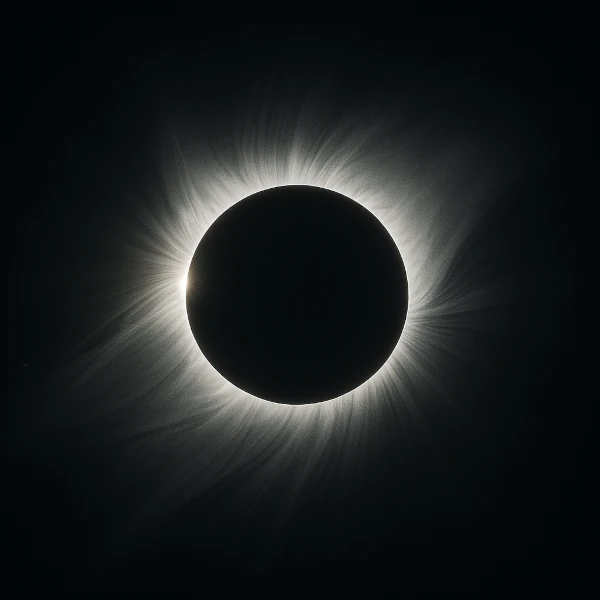
An eclipse is a celestial game of hide-and-seek between the Moon and the Sun! Imagine: the Moon passes between the Earth and the Sun, casting its shadow on our planet. This extraordinary phenomenon occurs when the three celestial bodies align perfectly in space.
There are two main types of eclipses you can observe from Earth:
During a solar eclipse, the Moon positions itself exactly between the Earth and the Sun. It's as if someone turned off the main light in the sky! There are different types of solar eclipses:
During a lunar eclipse, the Earth positions itself between the Sun and the Moon. The shadow of our planet then colors the Moon red-orange, earning it the nickname "Blood Moon."
If the Moon orbits the Earth every 29.5 days, why don't we have an eclipse every month? The answer lies in the inclination of the Moon's orbit. It is not in the same plane as the Earth's orbit around the Sun. Most of the time, the Moon passes above or below the perfect alignment.
The fact that we can see total solar eclipses is an extraordinary coincidence. The Sun is about 400 times larger than the Moon, but it is also 400 times farther away! This makes them appear almost exactly the same size in our sky.
N.B. :
It is very important never to look directly at a solar eclipse without special protection. The Sun's light can permanently damage your eyes, even when it is partially hidden.
| Type of eclipse | Position of celestial bodies | Maximum duration | Visibility |
|---|---|---|---|
| Total solar eclipse | Earth - Moon - Sun | 7 minutes 30 seconds | Narrow band of 270 km |
| Total lunar eclipse | Sun - Earth - Moon | 1 hour 40 minutes | Entire night hemisphere |
| Annular solar eclipse | Earth - Moon - Sun | 12 minutes 30 seconds | Narrow band of 300 km |
| Partial lunar eclipse | Sun - Earth - Moon | Variable | Entire night hemisphere |
Source: NASA Eclipse Web Site and International Meteor Organization.